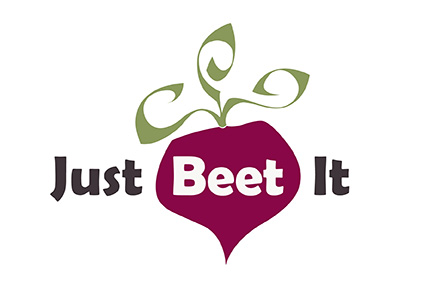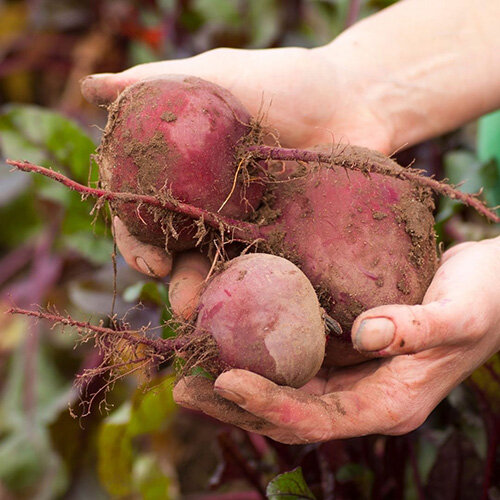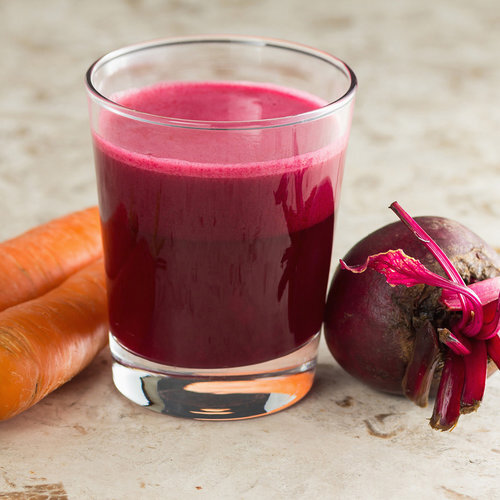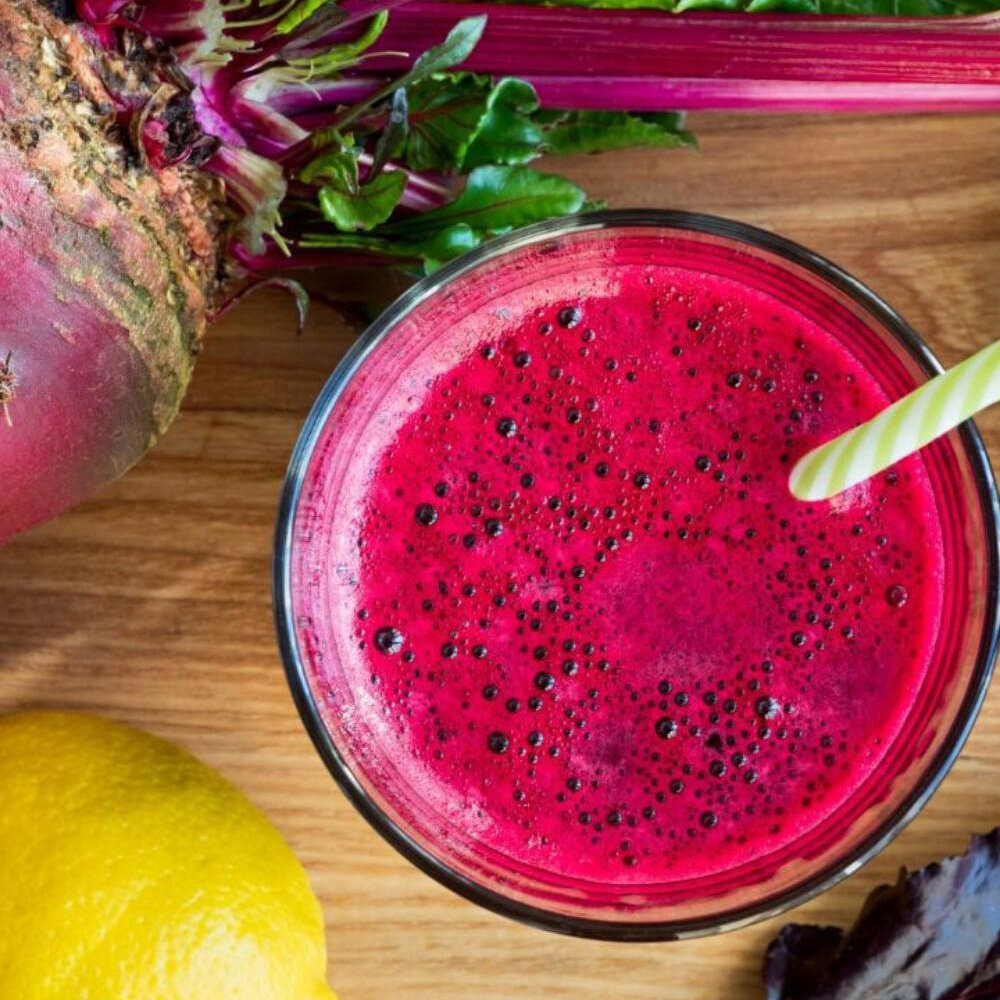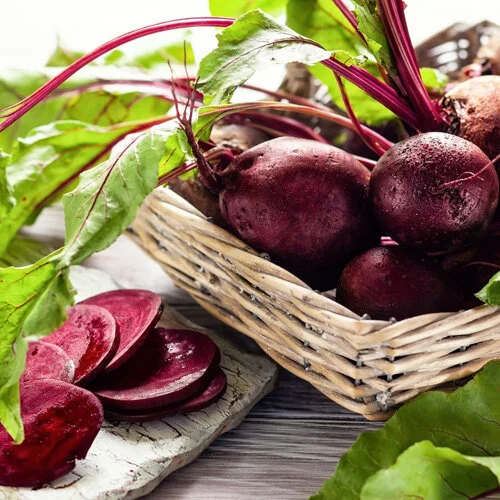Do you hate beets? If you despise the quirky beetroot, scientific studies may have an answer for your adverse reactions.
Thanks to science, you can put your mind at ease. It may not be your traumatic childhood memories of eating canned beets at dinner or swallowing mouth-puckering pickled beets at a family picnic that now make you cringe in horror at the sight of the humble beetroot. There are scientifically proven reasons for why some people dislike beets while others love them.
WHY DO BEETS TASTE LIKE DIRT?
Depending on who you ask, people seem to either adore or detest beets. Some people describe beets as sweet and others rant about the beet’s “earthy” taste; however, many people compare eating beets to chewing a mouth full of dirt. Yes. Beets are grown in dirt; however, the common misconception has been that because beets grow in the soil, they taste like dirt. The truth is that you are not actually eating dirt when eating beets, unless you didn’t wash your beets and are munching on them straight out of the soil.
Studies show that beets taste like dirt to some people because they contain a chemical called GEOSMIN (which means “dirt smell”), an organic compound produced by a type of actinobacteria called Streptomyces. Produced by organisms in the soil, this compound produces a distinctly earthy odor, an aroma that occurs in the air after a rainfall and in beets (along with other foods, such as mushrooms, carrots, chard, and grapes). This explains why people often think beets taste like “dirt” because geosmin has an earthy smell, like that of a freshly plowed field or wet soil.
WHAT IS GEOSMIN? THE INTERESTING TRUTH ABOUT BEETS AND WHY SOME PEOPLE DESPISE THEM.
So why do some people like beets while others hate them? Evidence shows that the beet’s natural chemical compound seems to be one that people either love or loathe. According to Jo Robinson, health writer and author of Eating on the Wild Side, "After a rain shower, the air is permeated with the odor of geosmin. We humans are extremely sensitive to the aroma of geosmin and can detect it in concentrations as low as five parts per trillion. People who do not like the odor will have a hard time eating beets." Since we often discern flavor through smell, beets taste like dirt based on what we are smelling.
The American Society for Horticulture Science also discusses the aromatic earthy compound geosmin to which some humans are remarkably sensitive. Because of this sensitivity, “The earthy taste of beet (B. vulgaris L.), caused by geosmin, elicits strong favorable and unfavorable reactions from consumers.” In addition, research shared by the National Center for Biotechnology Center in Chemosphere indicates that, “On the sensory level, very few individuals are immune to geosmin and although the intensity of the defect caused by this molecule decreases rapidly in the nose, a bad taste is very persistent in the mouth.”
Because humans (some more than others) are extremely sensitive to geosmin, people may react negatively or enjoy geosmin’s earthy taste. This explains why some people hate beets, while others who like the earthy smell after a rainfall, often love beets! Yup. There ARE people who LOVE beets.
DO ALL BEETS TASTE THE SAME?
Yes and no. All beets contain a similarly unique earth-like taste; however, there are certain beet varieties that taste more sweet and less earthy than other varieties.
For those who want to enjoy the superhero health benefits from beets but loathe the seemingly "earthy" dirt-like flavor associated with the beet, there is hope! Geosmin has no effect on our health (positively or negatively), but if you are most sensitive to earthy flavors and want to include beets in your diet, choose beets that contain lower levels of geosmin.
Interestingly, the levels of geosmin found in beets vary between varieties. In a study of four varieties conducted by Lu and co-workers in the United States, Detroit Dark Red had the lowest concentrations (9.7 mg/kg) and Chioggia had the highest concentrations (26.7 mg/kg) of geosmin. For beet enthusiasts who adore the beetroot’s unique earthy flavor, look for Chioggia Beets (strikingly vibrant pink and white striped beets). This beet variety has more geosmin than other beet varieties. Baby beets are also sweeter and taste less earthy, so if you aren’t a fan of the beet’s flavor but want to enjoy its many benefits, look for baby beets in the local markets.
Furthermore, thanks to Irwin Goldman, a Professor of Horticulture and vegetable expert (well-known for his plant breeding programs), a new series of beets has been developed that retain the beetroot’s extraordinary nutritional value while decreasing the potent levels of geosmin. Goldman’s “Badger Flame” series of beets is sweet and crunchy with less earthiness. As Goldman states, “so you get that hit of sucrose and not the hit of the soil.”
HOW DO YOU GET THE “DIRT” TASTE OUT OF BEETS?
Wondering how to make beets not taste like dirt? You can try different beet varieties that contain lower levels of geosmin, but overall, beets will be beets. If you want to eat more beets but are not super excited about the taste, there are various ways to prepare beets to reduce the “dirt like” taste.
For preparation, eating raw beets is the best for nutritional value, but roasting beets brings out the natural sweetness. Also - pickling beets adds a vinegar aspect that helps reduce the dirt-like taste. Fermenting beets is another way to reduce the beet’s distinct earthy taste. Have you tried Beet Sauerkraut? It’s divine and may have you loving beets yet! Adding beets to smoothies along with citrus, apples, or berries helps mute the beet’s earthy taste. For delicious beet smoothie ideas, 10 Unbelievably Yummy Beet Smoothies That Don’t Taste Like Dirt is a great place to start!
Did someone ask for delicious beet recipes? Here you go!
To get you started on your beet journey, check out these articles discussing Beet Types and Varieties along with How to Eat the Beet from Root to Leaf. Yes. The beet can be eaten from its root all the way to its leafy greens!
Have questions about beets or want to say hello! Drop us a comment below. We love meeting more beet enthusiasts. Cheers!
References
Acree, T. E., C. Y. Lee, R. M. Butts, and J. Barnard (March, 1976). Geosmin, the Earthy Component of Table Beet Odor. Journal of Agricultural and Food Chemistry, 24 (2), 430-431.
Lu, G., J.K. Fellman, C.G. Edwards, D.S. Mattinson and J. Navazio. (2003). Biosynthetic Origin of Geosmin in Red Beets (Beta Vulgaris L.) Journal of Agricultural Food Chemistry, 51 (4): 1026-9.
Maher, L., & Goldman, I. L. (2017). Bidirectional recurrent half-sib family selection for geosmin concentration in table beet. Crop Science, 57(5), 2564-2574. Retrieved from https://dl.sciencesocieties.org/publications/cs/abstracts/57/5/2564.
Maher, L., & Goldman, I. L. (2018). Endogenous Production of Geosmin in Table Beet. HortScience, 53(1), 67-72. Retrieved from http://hortsci.ashspublications.org/content/53/1/67.abstract.
Robinson, Jo. (2013). Eating on the Wild Side. Little, Brown and Company, New York. (www.eatwild.com).
Stensmyr, Marcus C., et al. (2012). A direct line through the brain to avoid rotten food. Max Planck Institute for Chemical Ecology. Retrieved from https://bit.ly/2T5Btim.
Viacheslav, Liato and Mohammed Aider. (2017). Geosmin as a source of the earthy-musty smell in fruits, vegetables and water: Origins, impact on foods and water, and review of the removing techniques. Chemosphere. Retrieved from http://pubmed.ncbi.nlm.nih.gov/28414956/.
YOU MAY ALSO LIKE
